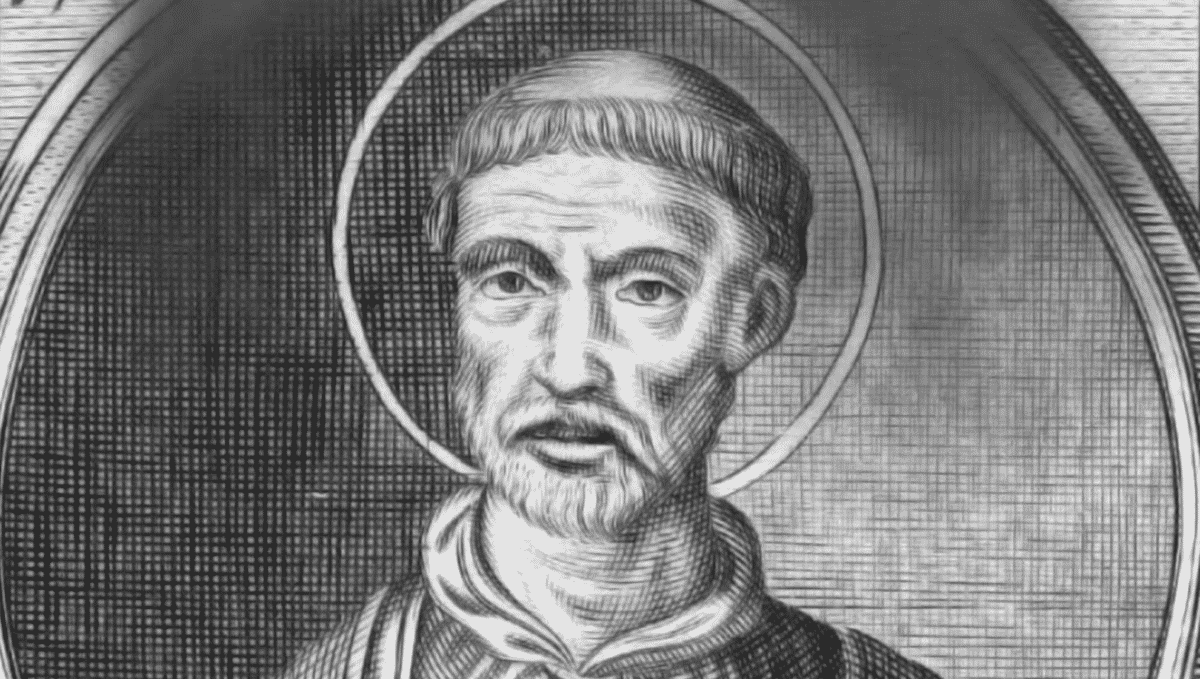Pope Saint Callixtus I – Laxity, Contraception, Abortion in AD 217
What happens when you have canonized Catholic saints criticizing and resisting a canonic Catholic pope? That’s exactly what happened with Pope Saint Callixtus I, who died in AD 223.
Tertullian and Origen spoke against Pope Callixtus for his laxity. And Saint Hippolytus became the Catholic Church’s first antipope in resistance to Pope Callixtus who he saw as promoting and allowing: contraception, abortion, heresy, and easy-penance.

Why the conflict?
Before we get started I want to stress that all this happened 100 years before Constantine legalized Catholicism. Some wrongly assume that before Constantine the Church of Rome was a happy assembly of saints without church politics. Not quite. The Church of Rome has been plagued with conflict and controversy from the very beginning (as detailed in this book).
The document Philosophumena (attributed to Saint Hippolytus of Rome) recounts how Pope Callixtus had once been a Roman slave belonging to a Christian master named Carpophorus. Carpophorus placed his slave Callixtus (the future pope) in charge of funds that he had collected from other Christians for the care of orphans, widows, and the poor.
Callixtus the slave who lost all the money. He fled Rome but was discovered boarding a ship near Portus, the harbor city of Rome. Callixtus jumped overboard to avoid capture but was arrested nonetheless and taken back to his Christian master Carpophorus.
In an attempt to recover the money, Callixtus the slave physically assaulted Jews inside a Roman synagogue in attempt to either get a loan from the Jews or to collect debts from Jews. He was re-arrested. At this time, he was denounced as a Christian (probably by the Roman Jews) and sent as a prisoner to the mines of Sardinia.
Enter Emperor Commodus. Commodus was the son of Emperor Marcus Aurelius. You likely remember him from the film Gladiator:

Emperor Commodus had a “Christian” mistress named Marcia (you might be surprised to learn that Rome one hundred years later had a collection of so-called “Christian prostitutes” that were regulated by Constantine’s son). The “Christian mistress” Marcia was served by a eunuch named Hyacinth who was also an ordained presbyter. (100 years later, eunuchs were banned from ordination at the Council of Nicea).
Marcia and Hyacinth appealed to the Roman Emperor Commodus for the release of Christian prisoners from the mines of Sardinia. This imperial intervention affected the release of Callixtus and other Christians in the mines. Life in the mines was rough and they had suffered there as witnesses to our Lord Jesus Christ. These Christians were honored by Christians back in Rome as quasi-martyrs.
Callixtus’s Rise to the Papacy:
- Pope Victor I as Bishop of Rome honored Callixtus with a monthly pension from the Catholic Church, supposedly to honor him as a living confessor (one who suffered for Christ, but did not die).
- Pope Zephyrinus (successor of Victor I) honored Callixtus in AD 199 by ordaining him as one of the prestigious “seven deacons of Rome,” and appointed him as guardian of the catacombs along the Appian Way. To this day, these catacombs are named after Callixtus as the “Catacombs of Saint Callixtus.” From his time until the time of Constantine, this catacomb became the ceremonial burial place for nine bishops of Rome. (Origen visited Rome during the reign of Pope Zephyrinus.)
- Deacon Callixtus became the chief advisor of Pope Zephyrinus in Rome.
- In AD 217, Pope Zephyrinus received the crown of martyrdom and the Deacon Callixtus was the obvious choice for Bishop of Rome.
- Callixtus became Pope in AD 217 and established Santa Maria in Trastevere as his principle “cathedral” in Rome (this was before the Lateran basilica was given to the Church by Constantine and before the construction of the basilica at the Vatican).
Pope Callixtus as a “Lax Pope”:
Callixtus’s “pre-mining” life had been one of financial controversy, and yet he had proved himself faithful to Christ in the mines and worthy of respect and office in the Church of Rome. Perhaps it was his controversial past that lead to his position of laxity for the Church in Rome.
In AD 217 (the first year of his Pontificate), Pope Callixtus issued the “Decree of 217” which scandalized many, especially Tertullian who documents the episode. The Decree of 217 stated that penance and absolution would be enough to re-admit Christians to the Eucharist for the seven sins previously restricted. These seven sins were:
- murder
- idolatry
- fraud
- apostasy (publicly renouncing Jesus Christ)
- blasphemy
- adultery (sex with someone besides your spouse)
- fornication (sex outside marriage)
(this list is found in Tertullian’s De Pudicitia*, Ch 19).
Pope Callixtus also allowed:
- not requiring public penance from heretics entering the Catholic Church.
- clergy t0 marry before and after ordination.
- noblewomen to contract Christian marriages with plebs and slaves (forbidden by Roman law).
The Christians at the time were divided on this lax approach to sinners.
- Tertullian openly wrote and taught against the lax novelties of Pope Callixtus.
- The Greek-speaking Roman priest Hippolytus was elected as a rival Bishop of Rome and became the Church’s first Anti-Pope.
- Origen relates how when he was in Rome he heard the famous Hippolytus preach – showing that Origen was sympathetic with Hippolytus’ theology. It seems however that Origen greatly respected the Bishop of Rome and that he heard Hippolytus preach before Hippolytus presumed to become a rival Bishop in Rome. Nevertheless, Origen’s strictness would seem to make him more sympathetic with the ancient practice of making sacramental absolution rare.
In general, opponents of Pope Callixtus alleged that his policies would lead to a lower of morals among Christians, and this proved to the case with regard to contraception and abortion.
The Problem of Abortion and Contraception among Christians during the time of Pope Callixtus:
Hippolytus laments that Catholic women in Rome began to engage in contraception and abortion during the lax reign of Pope Callixtus:
Whence women, reputed believers, began to resort to drugs for producing sterility, and to gird themselves round [their belly], so to expel what was being conceived on account of their not wishing to have a child either by a slave or by any paltry fellow, for the sake of their family and excessive wealth. Behold, into how great impiety that lawless one has proceeded, by inculcating adultery and murder at the same time! And withal, after such audacious acts, they, lost to all shame, attempt to call themselves a Catholic Church.
For Hippolytus, this rise in contraception and abortion among Roman Christian women was a sign that the laxity of Pope Callixtus was bearing evil fruit.
Five or six years later, Pope Callixtus received the crown of martyrdom in AD 222 or 223 and was enrolled in the number of the saints. His feast day is October 14.
Conclusion:
Do grace and mercy lead to laxity? It’s a common question: If God forgives me no matter what, why not just keep sinning? Why change my life at all?
This precise question is tackled by Saint Paul in his epistle to the Romans 6:
1 What shall we say then? Are we to continue in sin that grace may abound? 2 By no means! How can we who died to sin still live in it? 3 Do you not know that all of us who have been baptized into Christ Jesus were baptized into his death? 4 We were buried[a] therefore with him by baptism into death, so that as Christ was raised from the dead by the glory of the Father, we too might walk in newness of life.
It was and will be a perennial question for Christians in every age. If a Christian can just “pray the prayer” (as Evangelicals say), just be baptized, just go to confession, or just get an indulgence, why live like a saint?
Problems also with Rigorism:
But there is an opposite error. If the forgiveness of sin is rigorous (as it was before AD 217), two results follow:
- First, is simply despair. If forgiveness if far off, why even try?
- There is a second result that I would like to suggest that I rarely see in Patristic studies. I believe that the popularity of Gnosticism and Gnostic sects the exploded in the 100s was partly due to the lack of access to sacramental absolution. Gnostics promised that there were secret ways (not depending on morality or absolution) that allowed access to God. If a Christian had fallen into apostasy, murder, or adultery and could not find forgiveness and communion within the Catholic Church, there would be extreme pressure to join a Gnostic cult where immediate salvation and access to God was assured.
All Catholics today would grant that Pope Callixtus made the correct move, by allowing for “easy” absolution of grave sins before the time of death. (Easy, by the way, still entailed periods of public penance.) Did this new laxity come with a price? Yes. Did Catholic women try to “get away” with contraception and abortion? Yes. Does that still happen today? Yes.
Is the solution to this form of laxity to make the conditions for sacramental absolution more strict? No. I don’t think so. People can and will take advantage of grace in every age. There is no way to prevent that. However, we must always be in a position to recognize the forgiveness and mercy of Christ who was ready to immediately forgive the repentant Peter, Thomas, Paul, et al.
[reminder]I would love to hear your thoughts on this topic of lax vs. rigorous absolution.[/reminder]
What to Watch Next
SHOP THE TAYLOR MARSHALL STORE
Dive Deeper

GET CONFIDENT IN YOUR FAITH
Explore the fascinating world of Catholic teachings with Dr. Marshall. Together you’ll unpack the brilliant answers the Church gives to tough questions about the Faith. The best part: you go at your own pace. Start this exciting journey today.


 >
>


